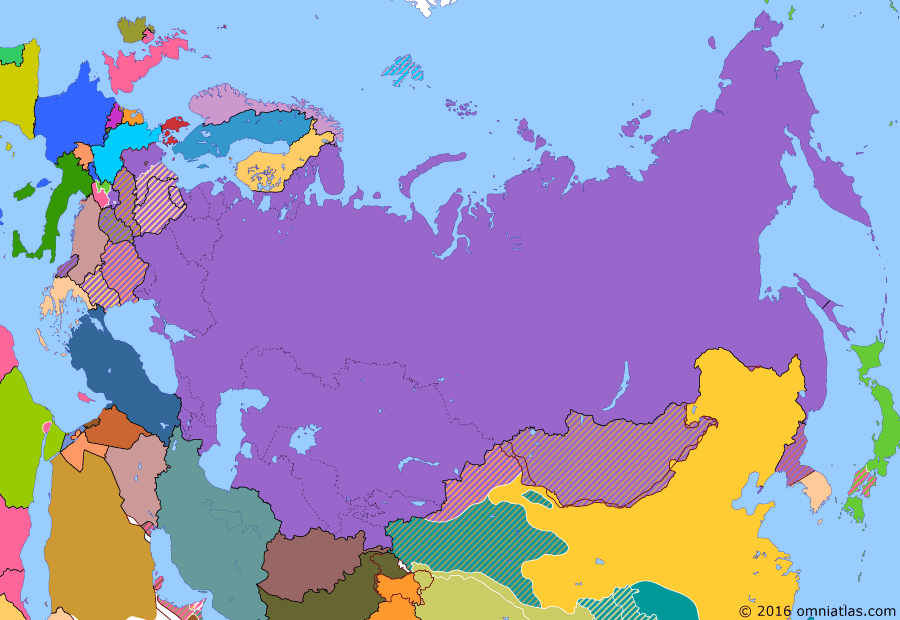Northern Eurasia 1949: NATO and the Two Germanys

8 October 1949
8 Oct 1949
Soviet Superpower
1816–1914 Late Tsarist Russia
1914–1918 Great War and the Revolution
1918–1921 Russian Civil War: The White Phase
1921–1927 Russian Civil War: The Green Phase
1927–1941 Soviet Union under Stalin
1941–1943 Great Patriotic War: Germany Invades
1943–1945 Great Patriotic War: Germany at Bay
1945–1991 Soviet Superpower
1991–pres Successors of the Soviet Union
NATO and the Two Germanys
16 May 1946 Iran Crisis
24 Jun 1948 Berlin Blockade
8 Oct 1949 NATO and the Two Germanys
25 Jan 1951 Korean War
21 Sep 1955 Warsaw Pact
26 Jun 1963 Height of the Cold War
17 Nov 1969 Sino-Soviet Border Conflict
24 May 1985 Soviet War in Afghanistan
23 Dec 1989 Glasnost
25 Feb 1991 End of the Warsaw Pact
19 Aug 1991 Soviet Coup Attempt
On April 4, the United States and its European allies formed the NATO alliance to counter the Soviet Union. On May 12, the Soviets ended the Berlin blockade. Eleven days later, the western occupation zone of Germany became an independent republic. The Soviet-occupied east followed suit in October.
Meanwhile, two other pivotal events occurred: the Soviet Union tested its first nuclear weapon in August, and the Communists won the Chinese Civil War.
This map has in-depth notes in the Journal, exclusive to Patrons on Classical Tier and above. Find them in the events descriptions, marked with the Journal icon .